Table of Contents[Hide][Show]
- LISTEN TO THE PODCAST
- CHAPTERS
- Eat To Beat Inflammation in Diabetes
- Understanding Inflammation
Eating to Beat Inflammation+−
- 1. Avoid Sugar and Refined Carbohydrates
- 2. Limit Processed Foods
- 3. Load Your Plate with Vegetables and Fruits
- 4. Include Protein with Every Meal
- 5. Use Healthy Fats
- 6. Balance Omega-6 and Omega-3 Fatty Acids
- 7. Increase Magnesium Intake
- 8. Include Probiotics and Prebiotics
- 9. Add Anti-Inflammatory Nutraceuticals
- Practical Tips for Everyday Anti-Inflammatory Eating
- Conclusion
- Transcript
In this episode, we’re diving into how chronic systemic inflammation impacts type 2 diabetes and prediabetes and exploring practical dietary steps you can take to reduce inflammation and improve your health.
LISTEN TO THE PODCAST
CHAPTERS
3:06 What is inflammation?
7:14 How inflammation influences diabetes health
9:31 Proinflammatory foods
16:10 The Dietary Inflammatory Index
18:22 Anti-inflammatory foods and diet
24:21 Eat to beat inflammation; eat to treat diabetes
Support the podcast by leaving a 5-star rating and review on Apple, Spotify or our Website – Thank You!
Eat To Beat Inflammation in Diabetes
Chronic inflammation is a significant factor in the development and progression of many health conditions, including type 2 diabetes and prediabetes.
Fortunately, the right dietary choices can help you reduce inflammation, which has a flow-on effect in terms of improving your health. Let’s dive into some key steps you can take to improve your health.
Understanding Inflammation
First, let’s understand what inflammation is.
Think of inflammation as your body’s security system alerting you that something isn’t right. If you cut your hand, the area becomes red and inflamed as your body triggers an immune response to heal the wound.
This is acute inflammation, a natural and beneficial process.
However, chronic inflammation is different. It occurs at the cellular level and can affect all your body’s cells without visible signs.
This type of inflammation is ongoing, and your body becomes a bit confused, continuously triggering immune responses that lead to more inflammation and cellular changes.
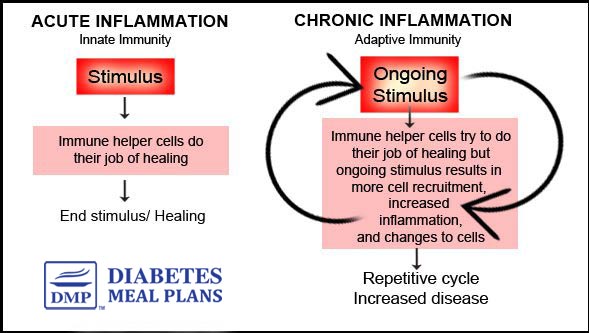
Inflammation and Type 2 Diabetes
Chronic inflammation plays a dual role in type 2 diabetes and prediabetes—it can both trigger the development of diabetes and worsen symptoms and complications after diagnosis.
For instance, inflammation can contribute to insulin resistance, a key factor in diabetes. Insulin resistance can then lead to a heightened inflammatory response, creating a vicious cycle.
Diet as a Driver of Inflammation
Essentially, when it comes down to it, our modern Western diet is filled with highly processed foods, refined sugars, and unhealthy fats – all of which increase inflammation and drive ill health!

Eating to Beat Inflammation
One key step to improve your health and reduce inflammation is through diet and nutrition.
Here are some practical steps to help you eat to beat inflammation:
1. Avoid Sugar and Refined Carbohydrates
Sugar provides no nutritional value other than energy and is found in many packaged foods. Refined and processed grains, such as white flour, are also inflammatory.
These foods rapidly increase inflammation in your body. To improve your health, minimize your intake of sugar and refined carbs as much as possible.
2. Limit Processed Foods
Processed foods often contain unhealthy fats and additives that promote inflammation.
These include partially hydrogenated vegetable oils, which produce trans fats during processing. Even trace amounts of trans fats can increase inflammation.
It is best to limit your intake of processed foods.

3. Load Your Plate with Vegetables and Fruits
Fresh fruits and especially vegetables are rich in vitamins, minerals, fiber, and phytonutrients, all of which reduce inflammation.
In terms of gaining good blood sugar control, non-starchy vegetables also happen to be the best source of carbohydrates. Aim to eat a variety of colors and large volumes of vegetables at every meal.
4. Include Protein with Every Meal
Choose fresh, unprocessed meats, fish, seafood, or plant-based proteins.
Protein helps maintain muscle mass and supports overall health, as it’s essential for the immune system and cellular function throughout the body.
Eating protein at breakfast can also help stabilize blood sugar levels throughout the day.

5. Use Healthy Fats
Avoid common cooking oils like safflower, soy, corn, and vegetable oil.
Instead, use olive oil, avocado, and nuts. These foods are rich in monounsaturated fats, which have anti-inflammatory properties.
6. Balance Omega-6 and Omega-3 Fatty Acids
Take it one step further and focus on balancing your intake of omega 6 and 3 fats.
Many people consume too much omega-6 fatty acids, found in processed foods, and not enough omega-3s. Too much omega 6 can increase inflammation, while more omega 3s can help decrease inflammation.
Omega-3-rich foods include salmon, mackerel, tuna, chia seeds, walnuts, and hemp seeds.
You can also include an omega-3 supplement. Here’s a couple we recommend.
I have been so happy with this program. I was always concerned with my morning numbers but now I have had such success with seeing them lower. I finally went to the doctor and she was encouraged with my progress. I lost 40 pounds (18 kg) in the 16 week T2Diet program. My last doctor’s appointment lab test was A1c of 7.1, down from 11! Thank you again for this program.
~Wilma
7. Increase Magnesium Intake
According to Dr. Herbert’s work with the Dietary Inflammatory Index, magnesium is one of the top anti-inflammatory nutrients.
Foods rich in magnesium include seeds (pumpkin, flax, chia, sesame), nuts (Brazil nuts, cashews, almonds), green leafy vegetables, avocados, legumes, unsweetened cocoa and dark chocolate.
You can also take a magnesium supplement. Here’s a couple we recommend.
Powders, such as this one from Magnesi-Om, are often a great way to take magnesium for better absorption.
If you prefer capsule, this glycinate is moe bioavailable than other forms such as oxide.
8. Include Probiotics and Prebiotics
Maintaining a healthy gut microbiome is crucial for reducing inflammation.
Probiotics, found in fermented foods like yogurt, kefir, sauerkraut, and kimchi, introduce beneficial bacteria to your gut.
Prebiotics, found in foods like garlic, onions, bananas, and asparagus, feed these good bacteria.
Together, probiotics and prebiotics support a balanced gut microbiome, which can help lower inflammation and improve overall health.
You can also include probiotic and prebiotic supplements to your daily routine. Here’s a couple we recommend
Vitalitown Probiotics with prebiotics
9. Add Anti-Inflammatory Nutraceuticals
Many foods and vegetables contain compounds that aid in reducing inflammation, compounds like flavonoids, carotenoids, polyphenols and other compounds found in vegetables, fruits, tea, nuts, seeds, olive oil, herbs and spices.
Two specific examples include:
- Turmeric is one such nutraceutical, with its active compound curcumin, which is a potent anti-inflammatory agent.
- Green tea, rich in polyphenols, has known anti-inflammatory properties.
Adding turmeric and lemon juice to tea can enhance its anti-inflammatory benefits.
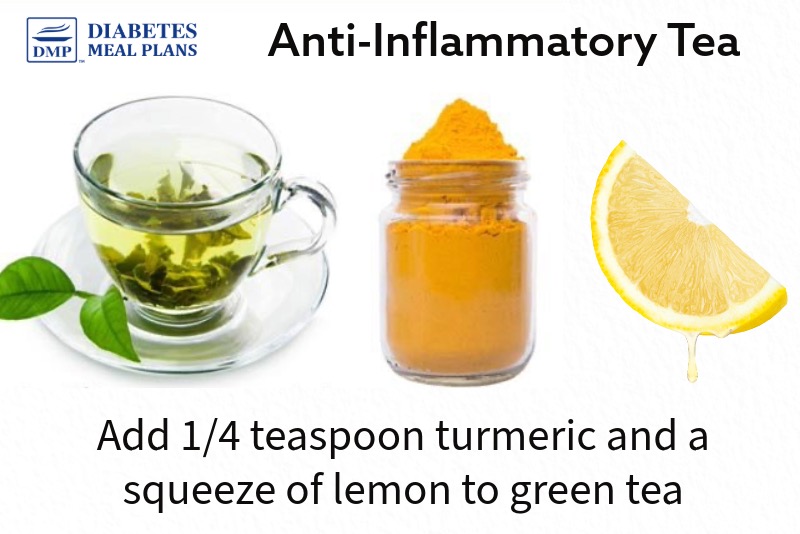
Practical Tips for Everyday Anti-Inflammatory Eating
Here are some practical tips to incorporate these anti-inflammatory foods into your daily eating routine:
Start your day with a nutrient-rich breakfast: Consider a smoothie with spinach, chia seeds, berries, and a scoop of protein powder. Or prepare yourself a Mixed Veggie Egg Scramble, including any of your favorite vegetables.
Prepare salads with a variety of colorful vegetables: Add a protein source like grilled chicken or tofu and dress with olive oil and lemon juice, or a basil pesto, such as this Chicken Pesto Zoodles Salad.
Snack on nuts and seeds: Keep a mix of almonds, walnuts, and pumpkin seeds handy for a healthy snack. Nuts are really a superfood with many proven health benefits!

Use herbs and spices: Enhance the flavor of your meals with anti-inflammatory spices like turmeric, ginger, and garlic, along with herbs like basil, oregano, thyme, sage and rosemary.
Include non-starchy vegetables at every meal: Mixed veggie scrambled eggs or omelets for breakfast. Veggie loaded salads for lunch. A Cheesy Veggie Bake alongside your meats, fish or chicken for dinner, or a delicious stir fry always makes a great meal. There are countless ways you can include more veggies in your eating plan!
Vegetables provide all those beneficial compounds that help reduce inflammation – flavonoids, carotenoids, polyphenols and dietary fiber.
Conclusion
Eating to beat inflammation is not only about avoiding certain foods but also about embracing a whole foods nutrient-rich diet.
By making these dietary changes, you can reduce inflammation, manage your blood sugar levels, and improve your overall health.
Remember, the key is to focus on nutrient-dense foods that support your body’s natural processes. Fresh, natural whole foods that your body can use to fuel its metabolism and daily functions.
When you do that, your body can take the reins and knows what to do!
To get started, grab a copy of our recommended food list. This list includes key foods to eat, minimize or avoid, helping you take the first step toward better diabetes health, improved blood sugar and reduced inflammation.
Transcript
Click Here To View
Dr. Jedha, Host
Hello there, welcome to episode 41 where the topic of the day is inflammation.
I developed an interest in inflammation about 13 or 14 years ago, and as a result I explored inflammation extensively during my Masters in Nutrition.
It’s interesting because when people think of inflammation they often think about conditions like arthritis, which certainly is an inflammatory condition. Or if you get a cut on your hand, it’s normal for the cut to become red and inflamed.
But inflammation goes much deeper than that. Inflammation plays an intricate role in the development of many health conditions, including in the development and progression of type 2 diabetes and prediabetes. Inflammation is involved in type 2 diabetes and prediabetes as both a cause and a consequence, meaning that initially inflammation may trigger the development of diabetes, but also once you’re diagnosed with diabetes, ongoing inflammation in the body’s cells contribute to various symptoms or complications.
So today we’re going to dive deep into understanding what inflammation really is, how it plays a role in the development and progression of type 2 diabetes and prediabetes, and what we can do to manage it effectively. In particular, we’ll explore the impact of diet and nutrition on inflammatory processes, and practical steps to reduce chronic inflammation through nutritional strategies.
3:06
Ready to dive in? Let’s get started!
So firstly you may ask: what is inflammation exactly? And that’s a great place for us to start.
Think of inflammation as your body’s security system, it tells your body something isn’t right.
As we said earlier, if you get a cut on your hand, it’s normal for the cut to become red and inflamed. This is your body’s way of triggering your immune system to help you heal. Inflammation is a natural response from your body sending in special helpers to support healing. This is acute inflammation and once the wound is healed, the inflammation stops. Similarly if we get a virus, the body’s immune system is stimulated to release inflammatory helpers, then once we’re better the inflammation subsides.
Then there’s another kind of inflammation that can occur on a cellular level, meaning you don’t see it but it’s affecting all your body’s cells. Long term inflammation, ongoing inflammation, often referred to as chronic inflammation, cellular inflammation or systemic inflammation. This type of inflammation is problematic because your body becomes a bit confused. Normally, inflammation means something is wrong, but chronic inflammation is triggered by ongoing stimulus. The immune helper cells try to do their job of healing but ongoing stimulus results in recruitment of more cells, increased inflammation and even changes to cells.
Inflammation puts high stress on the cells and tissues within the body and it causes them to start to change over time and can result in high blood pressure, high cholesterol, increased weight gain, aches and pains. And it can become a bit of a vicious cycle. These symptoms may be a result of inflammation, but they also cause more inflammation because your body recognizes something is wrong but just doesn’t quite know what to do about it.
The bottom line is that inflammation is a necessary bodily response, but left unchecked, inflammation can wreak havoc on our health.
We know that chronic systemic inflammation is a contributor to many health conditions – diabetes, weight gain, heart disease, depression, digestive issues and the list goes on.
As I said earlier, inflammation is involved in type 2 diabetes and prediabetes as both a cause and a consequence, meaning that initially inflammation may trigger the development of diabetes, but also once diabetes is diagnosed, ongoing inflammation in the body’s cells contributes to various symptoms or complications.
7:14
Let’s take insulin resistance as an example. We know insulin resistance is an underlying cause and issue in prediabetes and type 2 diabetes. We talked about this in episode 26. While there are potentially multiple reasons why it develops, a lot of the evidence suggests it all begins with diet-induced inflammation. Nutrient sensors in the body cause inflammation in the central control organ of the brain, the hypothalamus, which causes a cascade effect throughout our entire body and the body’s hormones and metabolism. Insulin resistance can then trigger a heightened inflammatory response as the body’s tissues become stressed by the inability to effectively use glucose for energy.
Let’s look at a few more examples to demonstrate how inflammation may influence our health.
As weight increases, fat cells release inflammatory molecules, increasing inflammation throughout the body.
It is possible for these immune cells to invade the pancreas where they can produce more inflammatory molecules, and this could potentially lead to destruction of the pancreatic beta cells.
This low grade chronic systemic inflammation can increase risk of complications.
Chronic high blood glucose levels lead to the formation of advanced glycation end products (otherwise known as AGEs). AGEs can bind to their receptors on various cells, promoting inflammation and oxidative stress. Oxidative stress arises from an imbalance between the production of reactive oxygen species (ROS) and the body’s antioxidant defenses. High glucose levels and insulin resistance increase oxidative stress production.
When other related conditions develop such as high cholesterol or blood pressure, these can contribute to inflammation.
There’s also other potential factors, and I know that’s all quite technical, but essentially inflammation, a chronic systemic inflammation occurring in the body’s cells, is at the bottom of all of it. And it can happen to us all.
There are some things within our power to change this, and some things outside of our power. Here on Type 2 Diabetes Talk, we focus a lot on the power of nutrition, so let’s look closer at diet and nutrition and how this might spark inflammation and help heal it as well.
9:31
In the modern Western diet there are many food products that could potentially be pro-inflammatory foods. Think about our modern Western diet – it’s filled with food products that are highly processed, filled with excessive amounts of refined sugar, grains, additives and preservatives, all of which are unnatural to the body and this stimulates a negative response from the immune system. It’s also because a lot of food products are overconsumed, in much larger portions than is healthy, and on too frequent a basis.
Foods that were meant to be eaten in moderation, meaning occasionally, are now consumed every day, 3 times a day or perhaps even more, and unfortunately the body does not respond well to this. Yes, the body is intelligent enough to know that these foods aren’t right for our bodies.
So let’s briefly cover some pro-inflammatory foods, foods that increase inflammation.
Number one is sugar. Sugar comes in many different forms but the main thing about sugar is it provides no nutritional value, other than energy. While sugar itself may be okay in moderation, sugar is now an ingredient in so many packaged foods these days, from biscuits, cakes, sweets, cereals, pies, crackers, ready made meals, ice creams, to packet foods, tinned foods, bottled and jarred goods. We are overconsuming sugar in copious amounts. In the 1700s the average person ate 4 pounds/2 kilos of sugar per year, now the average person may eat 130 pounds/60 kgs per year. The average person a century ago only consumed small amounts of sugar, in a mostly unprocessed food diet. We now consume sugar excessively in a diet that also contains lots of other food processing.
Refined and processed grains are another example. Highly refined white flour for example, is used in the majority of products, products that often contain little fiber and have a high glycemic index that essentially makes them equally as bad as sugar. They are empty of nutrients and rapidly increase inflammation in the body.
Common cooking oils are highly inflammatory. Think: safflower, soy, corn, cottonseed, peanut, rice bran, vegetable oil, and all types of margarine. These oils are very high in omega 6 fatty acids, which promotes inflammation through the production of pro-inflammatory molecules. Too much omega 6 also prevents the powerful omega 3 anti-inflammatory fatty acids from converting, as both types of fatty acids compete for the same enzymes. And the issue here again is, these common oils are consumed far too much because they are cheaper oils to include in food products.
Food additives and preservatives: the impact and effect of many food additives and preservatives on our health is largely unknown. Why is this? Because while food additives are FDA approved for safe consumption, these are usually tested in isolation of other additives and we have very little data on how additives and preservatives react with one another to affect the body. Research I’ve looked at this week, highlighted the potentially detrimental effects of common food additives in terms of risk of developing type 2 diabetes. And these were emulsifiers found in very common foods like breads, cakes, biscuits, ice cream, chocolate bars, margarines, ready-to-eat meals and many other processed foods. One plausible explanation for this was due to the impact of emulsifiers on gut bacteria which leads to a chronic low grade intestinal inflammation. The consequences of this obviously travel to the rest of our body.
Another question people often ask is whether carbohydrates cause inflammation.
Both carbs and inflammation are intimately linked to type 2 diabetes and prediabetes, and your overall health.
For example, we know carbohydrates are the nutrient that most impact blood sugar levels. Hence if you want to lower blood sugar, lowering carbohydrate intake and choosing the right types of carbs is important.
We also know uncontrolled diabetes leads to higher levels of inflammation. High blood sugar levels can increase inflammation and cause elevated levels of inflammatory markers.
Scientists propose this is due to an increased production in reactive oxygen species (free radicals) and advanced glycation endproducts – those AGEs I spoke about earlier.
So yes, consuming too many carbohydrates can influence blood sugar, insulin resistance, gut bacteria and metabolism in ways that can lead to increased inflammation.
So if our diet and the foods we eat can get us into this whole messy situation with inflammation, can it help get us out of it. The answer is yes.
16:10
As I shared at the beginning of the episode, I developed an interest in inflammation about 13 or 14 years ago, exploring it during my Masters in Nutrition. It was around that time I discovered Dr James Hebert’s early research on the Dietary Inflammatory Index in 2009, which was later redeveloped and has now been used to assess many different diets.
There is no universal definition of an anti-inflammatory diet. But one key thing researchers have learned from applying the dietary inflammatory index to lots of studies in more than 30 countries around the globe, in people of both sexes and varying ages, the one thing that is crystal clear is: an anti-inflammatory diet is a whole foods based diet. A diet that contains real foods, nutrient dense foods. Think: home cooked foods in their closest form to nature. Foods that provide the nutritional support our body’s need to function optimally. In contrast, the types of foods we covered earlier, sugar, refined flours, vegetable oils and processed foods that make up our modern Western diet are energy dense but nutrient poor – these increase inflammation.
So the type of foods to eat to beat inflammation are the same as those we covered in Episode 6 to eat to treat diabetes. With our meal plans and nutrition recommendations, our members are tackling multiple angles of their metabolism and health.
So you can go back and listen to episode 6, and as a bonus you can also grab a free copy of our recommended food list. Just head to Type2DiabetesTalk.com/foodlist. The food list has got a list of key foods to eat, minimize or avoid and is a really great way to get started. For our members, head to the members site to find the anti-inflammatory index of foods alongside episode 41 or in the downloadable guides.
18:22
Right now though, let’s cover some key things you can do to reduce inflammation. And we’re going to focus on nutrition here.
Number one which we’ve already covered is to avoid sugar and refined carbohydrates, the highly refined and processed grains. The number one dietary factor that drives inflammation sky high is the consumption of sugar, refined carbs, and the high glycemic load processed foods.
In addition, one of the negatives of packaged and processed foods and baked goods are they often contain partially hydrogenated vegetable oils. During this process small amounts of trans fats are produced. Even trace amounts of trans fats have negative health outcomes, including increased inflammation. The key overall is to minimize processed foods. Choose whole food sources and avoid packaged and processed foods. Always read food labels to ensure items contain quality ingredients.
Better yet, load your plate with foods that don’t require a packet.
Load your plate with vegetables and fruits. For the widest variety of vitamins, minerals, fiber and phytonutrients — substances needed for the body to function at its best — fresh fruits and in particular, lots of vegetables are the answer. Non-starchy vegetables are also the best source of carbohydrates to consume. Eat a variety of colors and eat them in large volumes at every single meal.
Consume protein with every meal, fresh unprocessed meat, fish, seafood or plant-based proteins. Include fresh and dried herbs and spices. Include neutral and beneficial oil like olive oil, the the benefits of which we covered extensively in episode 14. And other monounsaturated fat-rich foods like avocado, hazelnuts, macadamia nuts, and almonds.
Take it one step further and try to balance the omega-6/3 fat ratio. In terms of fats, most people have higher levels of omega-6 fatty acids compared to omega-3s. And as we established earlier, it’s because many processed foods contain low quality vegetable oils. Since omega 6 and omega 3 fats compete for the same conversion enzymes and omega-6 is considered proinflammatory, well, if you’re overconsuming the sixers, the result is often increased inflammation.
By including more omega-3-rich foods such as fatty fish like salmon, tuna and sardines, along with nuts and seeds like chia seeds, walnuts, and hemp seeds, you can decrease inflammation.
Magnesium is a key anti-inflammatory nutrient, and we covered this wonderful nutrient in episode 39. Some magnesium rich foods include seeds like pumpkin seeds, flax seeds, hemp seeds, chia seeds and sesame seeds, and nuts such as Brazil nuts, cashews and almonds. Dried herbs, green leafy vegetables, avocados, legumes and Unsweetened cocoa and dark chocolate are all magnesium-rich.
Dietary fiber is anti-inflammatory, as it feeds good gut bacteria, leading to the production of short-chain fatty acids like butyrate. These short-chain fatty acids have been shown to reduce inflammation in the gut and throughout the body.
Speaking of gut bacteria, maintaining a healthy gut microbiome is crucial for reducing inflammation. An imbalance in gut bacteria, known as dysbiosis, can lead to increased intestinal permeability, allowing harmful substances to enter the bloodstream and trigger that systemic inflammation that we’ve been talking about today. So we want to encourage the good guys in our gut as much as possible, which we do by eating lots of vegetables and fiber from nuts and seeds, and small portions of beans and legumes, and also by decreasing all the proinflammatory foods we’ve talked about today. Then there’s probiotics, live microorganisms we can get from supplements or from probiotics foods, for instance, from fermented foods like yogurt, kefir, sauerkraut, and kimchi, all of these introduce beneficial bacteria to your gut. And also Prebiotics, which are non-digestible food components that selectively stimulate the growth and activity of beneficial bacteria in the gut. Prebiotics are found in foods like garlic, onions, and asparagus, and again these feed the good bacteria.
Turmeric is a potent anti-inflammatory agent due to the compound curcumin that it contains. Tea, especially green tea, which is high in polyphenols. Adding turmeric and lemon juice to tea can enhance its anti-inflammatory properties. Lemon juice provides vitamin C, which also has antioxidant and anti-inflammatory effects, and can enhance the absorption of curcumin from turmeric.
In fact, there are a wide range of plant-based phytochemicals that provide potent anti-inflammatory power. Flavonoids, carotenoids, polyphenols and other compounds found in vegetables, fruits, tea, nuts, seeds, olive oil, herbs and spices – these are all beneficial for our health and reducing inflammation.
24:21
Again, the key to eating to beat inflammation, is the same as eating to treat diabetes. The principles are the same, which is why our nutrition guidelines are so effective for not only lowering blood sugar and A1c but reducing inflammation, boosting overall metabolism, losing weight, improving liver function, cholesterol and blood pressure, reducing medication, and the list goes on. It’s quite amazing and fantastic really, that when we choose nutrient-rich foods, our body takes the reins and knows what to do.
As I said, you can get started today. Head to Type2DiabetesTalk.com/foodlist and grab a free copy of our recommended food list. It’s got a list of key foods to eat, minimize or avoid and if you follow along with the guidelines in it, you will be seeing some changes to your health, including decreased inflammation as well. And if you do happen to have an inflammatory condition like arthritis, that is going to help with your inflammation on that front too!
And as I said, if you’re one of our members, head to the members site to find the anti-inflammatory index of foods alongside episode 41 or in the downloadable guides.
That’s all from me today. Thanks for joining me and take care until next week.
Dr Jedha, over and out.
Subscribe to Type 2 Diabetes Talk on: Apple | Spotify | Amazon Music | Audible | YouTube | Podcast Index | Player FM | and more…


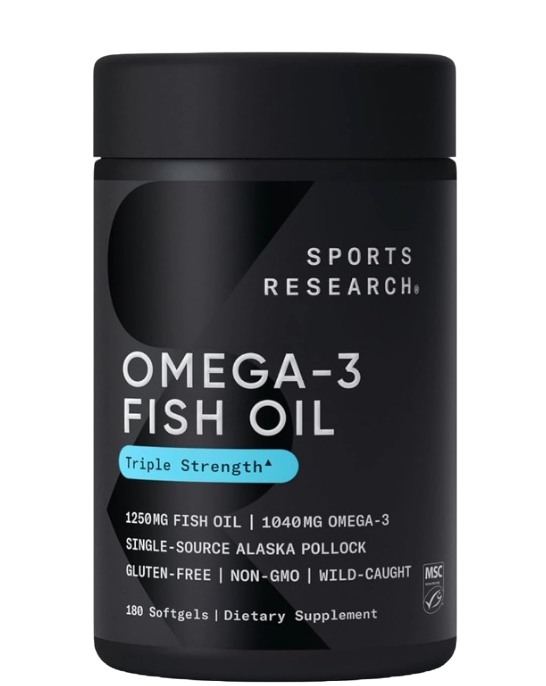
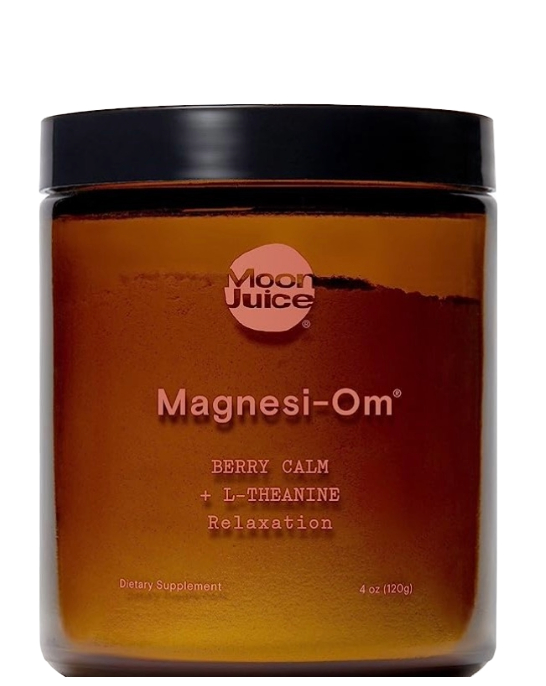
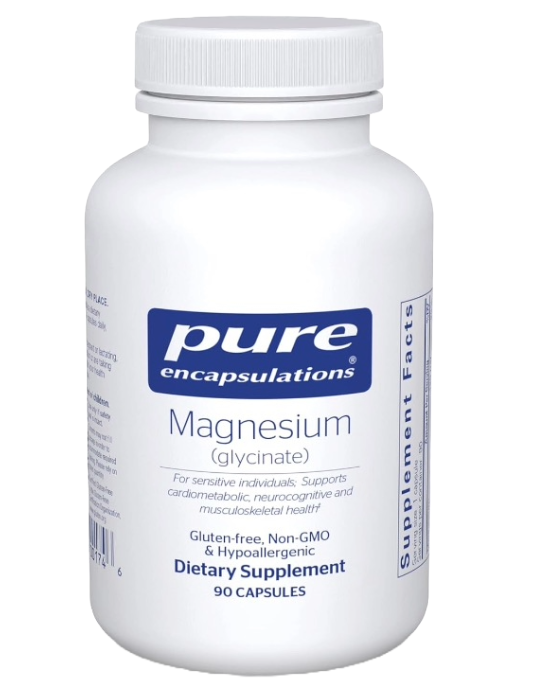


Leave a Reply